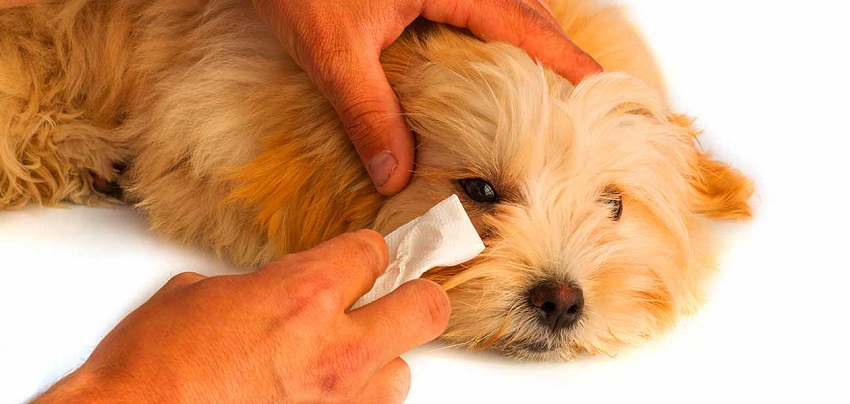A dog is typically in heat for 2 to 4 weeks. The estrus phase, or heat period, occurs every six months.
Understanding your dog’s reproductive cycle is crucial for responsible pet ownership. Heat, also known as estrus, is the part of the female dog’s reproductive cycle during which she becomes receptive to mating with males. Signs your dog is in heat include behavioral changes, a swollen vulva, bloody discharge, and increased urination.
Managing your dog’s heat cycle may involve additional attention and care to prevent unwanted pregnancies. For those considering breeding, knowing the precise timing of heat is important for successful mating. Ensuring your pet’s comfort and health during this time requires preparation and knowledge of what to expect. It’s always best to consult with a veterinarian for personalized advice and to ensure your furry friend stays healthy and happy throughout her heat cycle.
Understanding Canine Estrus Stages
The Proestrus Phase typically marks the onset of the heat cycle, lasting about 9 to 10 days. During this stage, female dogs exhibit swelling of the vulva and may produce a bloody discharge, but they do not accept males for mating. Dog owners will notice an increase in the animal’s urination frequency as she begins to attract the attention of male dogs.
The Estrus Phase follows, lasting between 5 to 14 days, where the female becomes receptive to males. The previously bloody discharge lightens in color and decreases in amount. This is the peak fertile period in which ovulation occurs, and the chances for successful mating are highest.
Next comes The Diestrus Phase, spanning about 60 to 90 days. If fertilization has occurred, this phase includes the duration of pregnancy; otherwise, it is simply a period of hormonal and physical normalization. There is no sexual behavior displayed during this phase, and the vulvar swelling subsides.
Finally, The Anestrus Phase signifies the period of sexual and hormonal inactivity in between heat cycles. This phase typically lasts about 4 to 5 months, completing the reproductive cycle until proestrus starts again.
‘how Long Is A Dog In Heat?’ Detailed Look
The estrus cycle in dogs, commonly referred to as being ‘in heat’, encompasses four stages: proestrus, estrus, diestrus, and anestrus. For most dogs, the entire cycle lasts about six months, but the ‘in heat’ phase, which includes proestrus and estrus, generally lasts for three weeks.
- Proestrus: This initial stage spans approximately 9 days, with signs such as swelling of the vulva and bloody discharge, but the dog is not yet receptive to males.
- Estrus: Lasting roughly 9 days as well, during this phase the dog is receptive to male dogs. It is marked by a lighter discharge and behavioral changes.
- Diestrus and Anestrus: These are the post-heat phases where the dog is no longer receptive to males.
Differences in heat duration may occur among breeds. Small breeds may go into heat more frequently, as often as three or four times a year, while large breeds may only have an estrus cycle once every 12-18 months. Notably, the duration and frequency of heat cycles may vary greatly and veterinary advice is recommended for abnormal patterns.
Managing Your Dog’s Heat Period
Coping with behavioral changes during your dog’s heat period requires patience and understanding. Female dogs may exhibit restlessness or become more affectionate or clingy. Providing a quiet, comfortable space and extra attention can help alleviate their stress.
For care and safety, maintain a routine with regular exercise and engagement to keep the dog calm. Monitor health closely, ensuring cleanliness particularly in their living area to prevent infections. Professional veterinary advice should be sought for any concerns.
Dealing with male dog attention requires vigilance. Secure fencing and a leash during walks are essential to prevent unwanted encounters. It’s advisable to avoid dog parks and areas with high dog traffic during this time.
Spaying is considered a responsible choice in the long term. It not only eliminates heat cycles but also reduces the risk of certain health issues and unwanted pregnancies. Consulting with a trusted vet about the procedure can provide valuable insights into the benefits and timing of spaying.
Monitoring Health During Heat
Dogs in heat experience various physiological changes, and it’s crucial to recognize health issues promptly. Symptoms like excessive licking of the genital area, changes in appetite, vaginal bleeding, or agitation might indicate discomfort or infection. Persistent symptoms or any signs of distress warrant immediate veterinary consultation to ensure your pet’s wellbeing.
Dog owners should be particularly observant of behavioral shifts and physical changes in their pets. Excessive urination, swelling of the vulva, and attempts to escape are also indicative of heat. Neglecting these signs can lead to more serious long-term health implications such as pyometra or reproductive disorders. Proactive monitoring helps in mitigating potential health risks associated with the estrus cycle.
Frequently Asked Questions For How Long Is A Dog In Heat
How Do You Know When Dog Heat Is Over?
A dog’s heat ends when vaginal bleeding and swelling subside and she no longer allows mounting. The entire estrus cycle typically lasts around 2-4 weeks. Observe her behavior; a return to normal indicates the end of her heat cycle.
How Long Is A Dog In Heat Bleed?
A dog in heat typically bleeds for about 7-10 days during the proestrus phase of the estrous cycle.
What Are The 4 Stages Of A Dog In Heat?
The four stages of a dog in heat are proestrus, estrus, diestrus, and anestrus. Each stage involves distinct changes in behavior and physical signs.
How Many Times A Year Is A Dog In Heat?
Most dogs go into heat approximately twice a year, with an average interval of six months between cycles.
Conclusion
Understanding your dog’s heat cycle is crucial for proper care and breeding plans. Generally, a heat period lasts about 2 to 4 weeks. By recognizing the signs and length of each stage, you can ensure your furry friend’s health and happiness.
Remember, consulting with a vet provides personalized guidance for your dog’s needs.




